- May 2020
-
decollected.net decollected.net
-
Baker Street
From HUGHES AND GEDULD 227: "an important thoroughfare in London's West End area. The (fictitious) home of Sherlock Holmes was at 221B Baker Street."
GANGNES: The majority of the Sherlock Holmes stories, like The War of the Worlds, were serialized in a popular general-interest periodical--in this case, The Strand Magazine. Arthur Conan Doyle, who wrote the Holmes stories, was an active fiction writer around the same time as Wells, and they published in some of the same periodicals.
More information:
-
-
decollected.net decollected.net
-
Installment 6 of 9 (September 1897)
This installment comprises the text that is roughly comparable to Book I ("The Coming of the Martians"), part of Chapter XV through the beginning of XVII of the 1898 collected edition and subsequent versions.
This is the cover of the September 1897 issue of Pearson's Magazine:
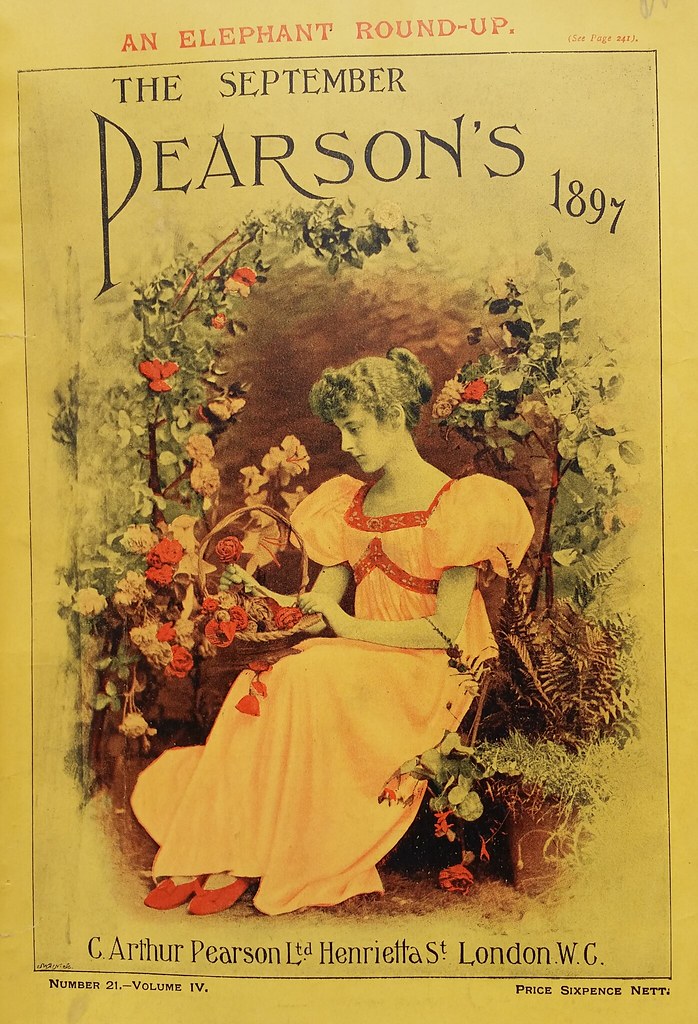
-
-
decollected.net decollected.net
-
the Strand
GANGNES: The Strand (technically just "Strand") is a road just south of Trafalgar Square (see below) and north of the Thames; it runs along to the east and then becomes Fleet Street (see above). The Strand Magazine, which published the Sherlock Holmes stories, took its name from the fact that its first publishing house was located on Southampton Street, intersecting with Strand.
From HUGHES AND GEDULD 234: The Strand is "an important thoroughfare in central London. It runs parallel with the Thames (a very short distance away) and extends west from the Aldwych to Trafalgar Square. It is the location of fashionable stores, hotels, theatres, and office buildings."
-
St. James’ Gazette
From MCCONNELL: evening paper published 1880-1905
From HUGHES AND GEDULD 212: "Established in 1880, St. James's Gazette was a pro-Tory paper with features that also appealed to readers with intellectual literary interests."
GANGNES: St. James's Gazette (Pearson's mistakenly leaves off the second "S") was a conservative daily broadsheet. It included social, political, and literary commentary, news, marriage announcements, stock market prices, and advertisements.
Source:
- Brake, Laurel, and Marysa Demoor, editors. Dictionary of Nineteenth-Century Journalism in Great Britain and Ireland. Academia Press and The British Library, 2009, p. 551.
-
-
decollected.net decollected.net
-
much as the parabolic mirror of a lighthouse projects a beam of light
From STOVER 81: "The Heat-Ray is often taken as a prophecy of beam-focused lasers, but this is to miss the photographic metaphor Wells uses: 'the camera that fired the Heat-Ray,' 'the camera-like generator of the Heat-Ray.' The Martians' rayguns are in fact cameras in reverse, emitting light not receiving it, and they are in fact mounted on tripods as were the heavy old cameras of the day. What they see they zap. More, the photo-journalistic realism of the invasion recounted by the narrator recalls that of Roger Fenton, whose coverage of the Crimean War in 1855 is the first instance of a war photographer on the scene of action. His pictures were accompanied by sensational stories done by the famed William Howard Russell of the London Times, the first war correspondent in the modern sense. The narrator's account is modeled after both precedents, visually and journalistically."
GANGNES: Stover here gestures (though not by name) to MCCONNELL (145), whose note is quoted by HUGHES AND GEDULD in their edition. MCCONNELL'S note reads: "Though the details of the heat-ray are vague, they do anticipate in some remarkable ways the development of the laser beam in the 1950s."
That said, MCCONNELL and others rightly point to one of the numerous instances in which Wells's descriptions of technologies and events appear prescient. Indeed, many of the Martian technologies seem to anticipate military tech developed for use in the First and Second World Wars. For an analysis of The War of the Worlds and its early illustrations as they relate to early twentieth-century warfare, see Gangnes, "Wars of the Worlds: H.G. Wells’s Ekphrastic Style in Word and Image" in Art and Science in Word and Image: Exploration and Discovery (Brill, 2019), pp. 100-114.
-
SUMMARY
GANGNES: Summaries like these are common in serialized fiction, as they are in comics and in television series--a kind of "previously on" bit of information. This not only reminds readers of what happened in the previous installment (which in this case would have been released a month prior), but also allows new readers to jump in at a later issue if they missed out. This was especially important in cases where an issue of a popular magazine or newspaper might have been sold out.
-
- Apr 2020
-
decollected.net decollected.net
-
People in these latter times scarcely realise the abundance and enterprise of our nineteenth century papers.
GANGNES: The narrator's comment here underscores this novel's preoccupation with the Victorian press. The style of the narration evokes something of war journalism from this period, and the unreliability and mercenary practices of newspapers are a theme throughout the novel. Wells is not exaggerating; the Victorian period has been called the "Golden Age" of the British periodical because of the staggering number and quality of newspapers, journals, and magazines published during the time.
More information:
- Debora Wynne, "The Periodical Press" on the Oxford Bibliographies site
- "History of C19th British Newspapers" on the North Carolina State University site's page for Nineteenth Century Newspaper Analytics
- The Victorian Periodicals section of The Victorian Web
- The Research Society for Victorian Periodicals site
-
I remember how jubilant Markham was at securing a new photograph of the planet for the illustrated paper he edited in those days.
GANGNES: It is not clear whether "Markham" is supposed to refer to a real editor of a specific newspaper. W. O. Markham edited the British Medical Journal, but that publication was not an illustrated paper. It is highly likely that "Markham" is a fictional character who is an acquaintance of the narrator.
Source:
- Brake, Laurel, and Marysa Demoor, editors. Dictionary of Nineteenth-Century Journalism in Great Britain and Ireland. Academia Press and The British Library, 2009, pp. 78-9.
-
Punch
GANGNES: Punch (1841-2002) was a weekly satirical magazine that was first marketed toward the Victorian middle class. It included text, cartoons and illustrations, and other visual features. It was characterized by a "whimsical mode of comedy that focused on the trials and aspirations of the still emergent middle classes."
Source:
- Brake, Laurel, and Marysa Demoor, editors. Dictionary of Nineteenth-Century Journalism in Great Britain and Ireland. Academia Press and The British Library, 2009, pp. 517-519.
More information:
-
Warwick Goble (1862-1948)
GANGNES: Warwick Goble (1862-1943) was a Victorian and early-twentieth-century periodical and book illustrator. His watercolor book illustrations have strong Japanese and Chinese influences and themes. Simon Houfe refers to Goble as a "brilliant watercolour painter of the 1900s and 1920s" and writes that Goble's "filmy translucent watercolours, with their subtle tints and Japanese compositions ... are unique in British illustration, but are not noticed by the collectors of [Arthur] Rackham and [Edmund] Dulac" (210).
In his dictionary entry, Houfe only acknowledges Goble's early relationship with periodicals in his role as a staff illustrator for the Pall Mall Gazette and the Westminster Gazette; Pearson's Magazine is not mentioned, despite the fact that Goble illustrated not only The War of the Worlds, but also Arthur Conan Doyle's Tales of the High Seas (short series) and other pieces in 1897. He provided illustrations for volumes of two other major pieces of late-Victorian serialized fiction: Robert Louis Stevenson's Treasure Island and Kidnapped.
Biographical sources:
- Simon Houfe, The Dictionary of British Book Illustrators and Caricaturists, 1800-1914 (Baron Publishing, 1981), pp. 210, 318.
- "Warwick Goble: A Biography of the Illustrator" on Pook Press's site.
-
Nature
From MCCONNELL 126: Nature is a scientific journal first edited by Sir Norman Lockyer, who was one of Wells's teachers at the Normal School of Science.
From STOVER 57: This is a reference to the article "A strange Light on Mars," which was published in Nature in 1894.
GANGNES: This is one of the many instances where Wells establishes the novel within a framework of real scientific discoveries and historical events. These connections enhance the realism and journalistic quality of the narrative.
More information:
-
idea of life upon them as impossible or improbable
From DANAHAY 41: Reference to a Victorian debate regarding the existence of intelligent life on Mars. See Wells's article "Intelligence on Mars" in the Saturday Review 8 (April 4, 1896), p. 345-46.
More information:
Tags
- decollected: STOVER
- decollected: GANGNES
- decollected: ILLUSTRATION
- decollected: DANAHAY
- decollected: PERIODICAL
- decollected: CLARIFICATION
- decollected: CONNECTION
- decollected: BIOGRAPHICAL
- decollected: REFERENCE
- decollected: MCCONNELL
- decollected: BACKGROUND
- decollected: COMMENTARY
Annotators
URL
-
- Jun 2019
-
decollected.net decollected.net
-
I think that we should remember how repulsive our carnivorous habits would seem to an intelligent rabbit.
GANGNES: Passages such as these garnered praise for the novel in late-Victorian vegetarian publications such as The Herald of the Golden Age (1896-1918) and The Vegetarian Magazine (1890-1909).
More information:
-
- May 2019
-
decollected.net decollected.net
-
Installment 9 of 9 (December 1897)
This installment comprises the text that is roughly comparable to Book II, Chapter VIII ("Dead London") through Chapter X ("The Epilogue") of the 1898 collected edition and subsequent versions. "The Man on Putney Hill"--Book II, Chapter VII of the volume--did not appear in the Pearson's version.
This is the cover of the December 1897 issue of Pearson's Magazine: the 1897 Double Christmas Number:
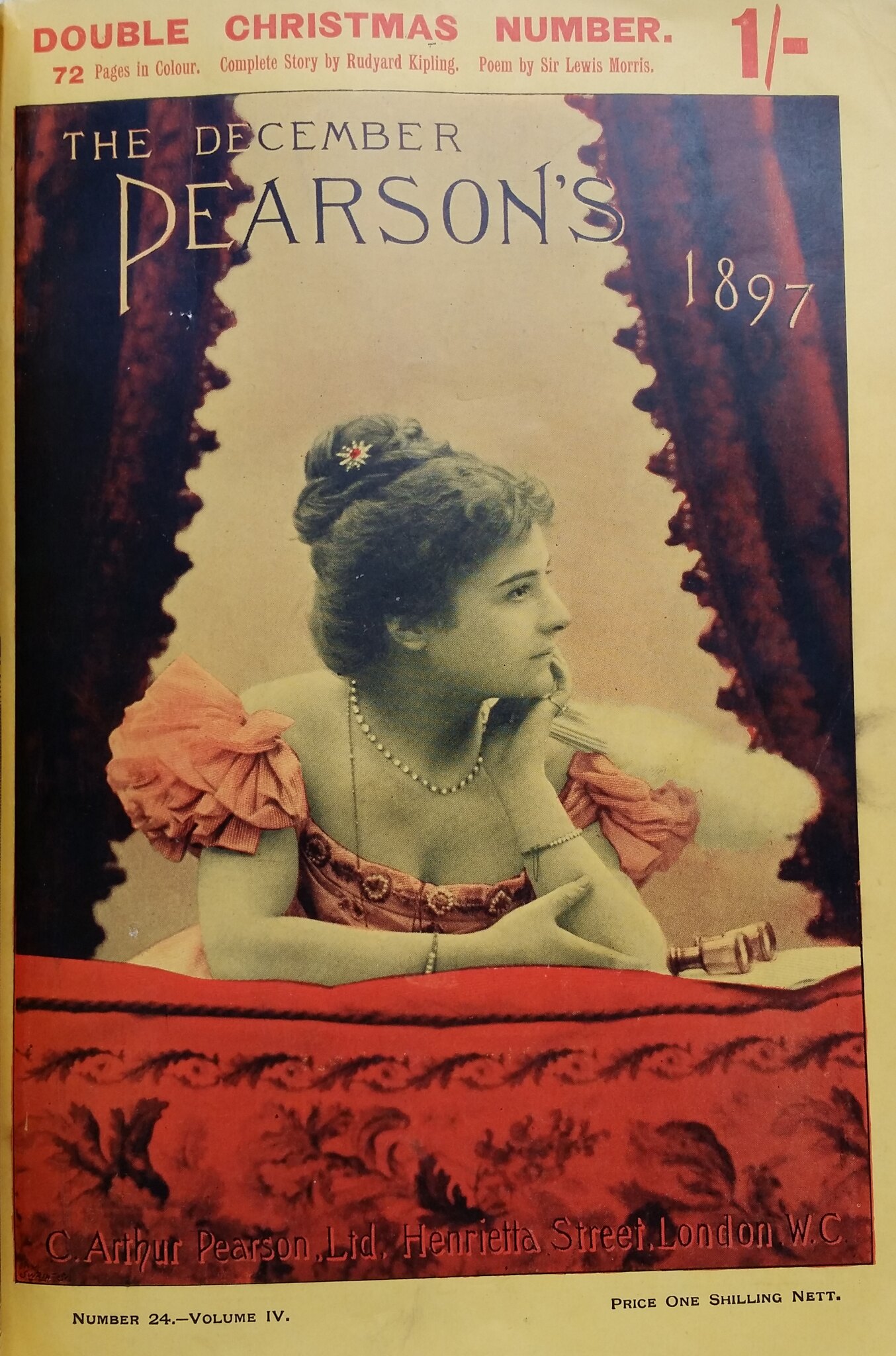
-
Knowledge
GANGNES: Knowledge: An Illustrated Magazine of Science, Plainly Worded -- Exactly Described (1881-1918) was founded as a weekly periodical with three-column pages by astronomer Richard Anthony Proctor in an effort to make scientific research more accessible. Advertisements allowed Knowledge to undercut the sales of Nature (see next note and Installment 1). It became a monthly periodical in 1885 and, under the editorship of Arthur Cowper, began to introduce reproductions of astronomical photographs, which allowed for the popular distribution of pictures of the stars. This structure of Knowledge at the time when Wells was writing The War of the Worlds is consistent with the idea that the journal might have published photographs of Mars and Venus.
Source:
- Brake, Laurel, and Marysa Demoor, editors. Dictionary of Nineteenth-Century Journalism in Great Britain and Ireland. Academia Press and The British Library, 2009, pp. 335-336.
-
-
decollected.net decollected.net
-
its cactus-like branches
GANGNES: Illustrations of the Red Weed vary significantly across illustrations and adaptations of The War of the Worlds. In many cases, the weed resembles a creeping vine or red kelp. Only one of the novel's major illustrators, Johan Briedé, took the "cactus-like" quality of the plants to heart. Briedé's illustrations were published in The Strand Magazine in 1920 with an introduction from Wells himself.
More information:
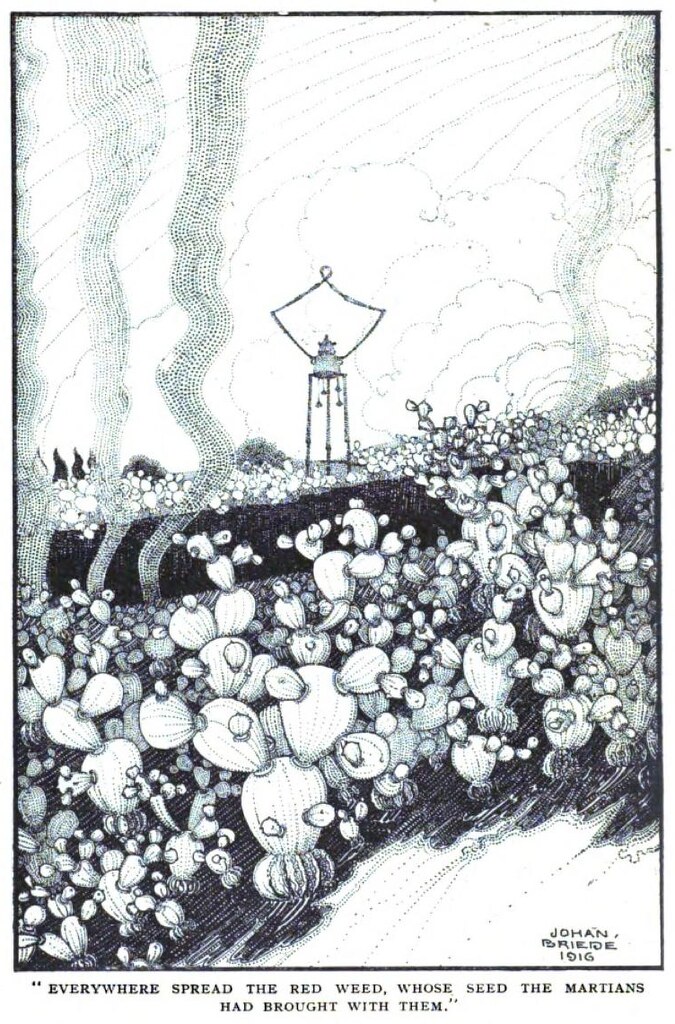
-
Installment 8 of 9 (November 1897)
This installment comprises the text that is roughly comparable to Book II, Chapter II ("What We Saw from the Ruined House") through Chapter VI ("The Work of Fifteen Days") of the 1898 collected edition and subsequent versions.
This is the cover of the November 1897 issue of Pearson's Magazine:
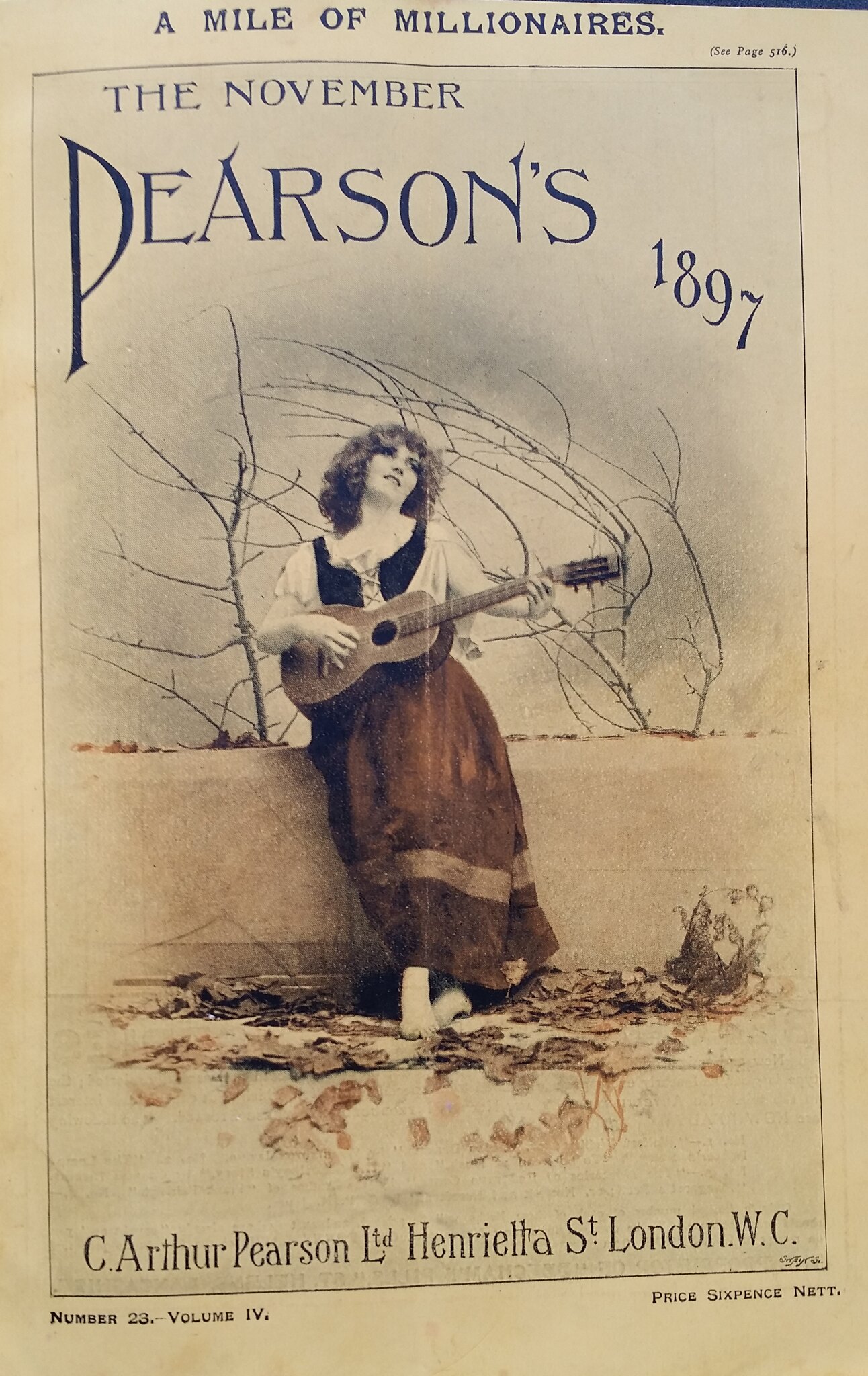
-
But this is an anticipation.
GANGNES: This line was cut from the 1898 volume. It is the kind of text marker designed to keep serial audiences engaged in the narrative and clamoring to buy the next installment, but in a volume it may come off as unnecessary foreshadowing that distracts from the flow of the narrative. Wells has substituted another form of foreshadowing that is simultaneously subtler and more detailed. The following sentence was added just before this point (between "upon it." and "The fronds"): "Now by the action of natural selection, all terrestrial plants have acquired a resisting power against bacterial diseases—they never succumb without a severe struggle, but the red weed rotted like a thing already dead." See text comparison page.
-
-
decollected.net decollected.net
-
Installment 7 of 9 (October 1897)
This installment comprises the text that is roughly comparable to Book I ("The Coming of the Martians"), part of Chapter XVII and Chapter I of Book II ("London Under the Martians") of the 1898 collected edition and subsequent versions.
This is the cover of the October 1897 issue of Pearson's Magazine:

-
no properly organised news distribution
GANGNES: This is another instance of the unreliability of the press during a time of crisis, especially when the government is in disarray. There is a tension throughout the novel of the citizens' hunger for official news--to the point where they will pay exorbitant prices for a newspaper--and the uselessness of the scraps of information they receive.
-
coloured supplements
From MCCONNELL 240: "Popular newspapers frequently issued these supplements, cheap and crude reproductions, 'suitable for framing,' of famous works of art or stirring historical scenes; they decorated the homes of many lower middle class families."
-
- Apr 2019
-
decollected.net decollected.net
-
Installment 5 of 9 (August 1897)
This installment comprises the text that is roughly comparable to Book I ("The Coming of the Martians"), Chapter XIV and part of XV of the 1898 collected edition and subsequent versions.
This is the cover of the August 1897 issue of Pearson's Magazine:

-
The majority of people in London do not read Sunday papers.
From HUGHES AND GEDULD 212: "In the 1890s, Sunday papers far outsold dailies.... Wells did not foresee the change and unwittingly 'dated' his narrative for future readers" when newspaper reading habits changed.
-
That was how the Sunday Sun put it, and a clever, and remarkably prompt “hand-book” article in the Referee
From MCCONNELL 193: "Two evening papers. The Sun was published 1893-1906, the Referee 1877-1928.
From HUGHES AND GEDULD 212: "The Sun, London's first popular halfpenny evening newspaper, was established in 1893 by T. P. O'Connor. A former London weekly, the Referee (founded 1877), was popular for its focus on humor, satire, sports, and theater."
GANGNES: The Referee was a "Sunday sporting newspaper"; the Sun was a Tory newspaper.
Source:
- Brake, Laurel, and Marysa Demoor, editors. Dictionary of Nineteenth-Century Journalism in Great Britain and Ireland. Academia Press and The British Library, 2009, pp. 317; 555.
-
Fleet Street
GANGNES: Fleet Street is a central London road on the north side of the Thames; it becomes (the) Strand (see below) to the west. During the Victorian period it was the home of most major London periodical publishers. It is associated with the story of Sweeney Todd: the "Demon Barber of Fleet Street," who appeared in the Victorian "penny dreadful" The String of Pearls: A Romance (1846-7).
From HUGHES AND GEDULD 229: Fleet Street is "a famous central London thoroughfare linking Ludgate Circus and The Strand. Until 1988 it was the home of many of London's most important newspapers. During Wells's lifetime 'Fleet Street' was a term synonymous with the British press."
More information:
-
no time to add a word of comment
GANGNES: The newspaper editors were so eager to get the newspapers printed and sell them that they did not include any journalistic commentary or other textual commentary on the proclamation; they simply reprinted it.
-
how ruthlessly the other contents of the paper had been hacked and taken out, to give this place
GANGNES: The other content they would have expected this newspaper to usually contain was left out so that it could accommodate the entire proclamation in large letters.
-
-
decollected.net decollected.net
-
Installment 4 of 9 (July 1897)
This installment comprises the text that is roughly comparable to Book I ("The Coming of the Martians"), Chapters XII-XIII of the 1898 collected edition and subsequent versions.
This is the cover of the July 1897 issue of Pearson's Magazine:

-
“It’s bows and arrows against the lightning, anyhow,”
STOVER: "It is the inequality of combat, magnified, between French and German forces in the Franco-Prussian War."
GANGNES: In addition to STOVER's note, consider the larger scope of nineteenth-century European imperialism; the 1890s were a time when the British empire was nearing its decline, and The War of the Worlds was one of many well-known novels written at the end of the century that addressed imperialism. Joseph Conrad's Heart of Darkness (serialized in Blackwood's Edinburgh Magazine in 1899 before being collected) tells of a real-life imperial experience, but Bram Stoker's Dracula, which was, like The War of the Worlds, published in 1897, is a very different kind of novel that nonetheless explores the idea of Britain being invaded by a superior entity in the way the British invaded colonial lands.
Numerous Wells scholars have written on the "reverse colonization" and "Empire comes home" nature of The War of the Worlds. As Robert Silverberg writes, "[Humans] simply don’t matter at all [to the Martians], any more than the natives of the Congo or Mexico or the Spice Islands mattered to the European invaders who descended upon them to take their lands and their treasures from them during the great age of colonialism.” Likewise, Robert Crossley observes, "The Martians do to England what the Victorians had done to Africa, Asia, and the South Pacific--and Wells intended that his fellow English imperialists taste a dose of their own medicine.”
Sources:
- Robert Crossley, "The Grandeur of H.G. Wells," A Companion to Science Fiction, ed. David Seed (Blackwell Publishing, 2005), p. 357.
- Robert Silverberg, The War of the Worlds: Fresh Perspectives on the H. G. Wells Classic, ed. Glenn Yeffeth (Benbella Books, 2005), p. 8.
More information:
-
-
decollected.net decollected.net
-
Installment 3 of 9 (June 1897)
This installment comprises the text that is roughly comparable to Book I ("The Coming of the Martians"), Chapters IX-XI of the 1898 collected edition and subsequent versions.
This is the cover of the June 1897 issue of Pearson's Magazine:

-
-
decollected.net decollected.net
-
Installment 2 of 9 (May 1897)
This installment comprises the text that is roughly comparable to Book I ("The Coming of the Martians"), Chapters V-VIII of the 1898 collected edition and subsequent versions.
This is the cover of the May 1897 issue of Pearson's Magazine:
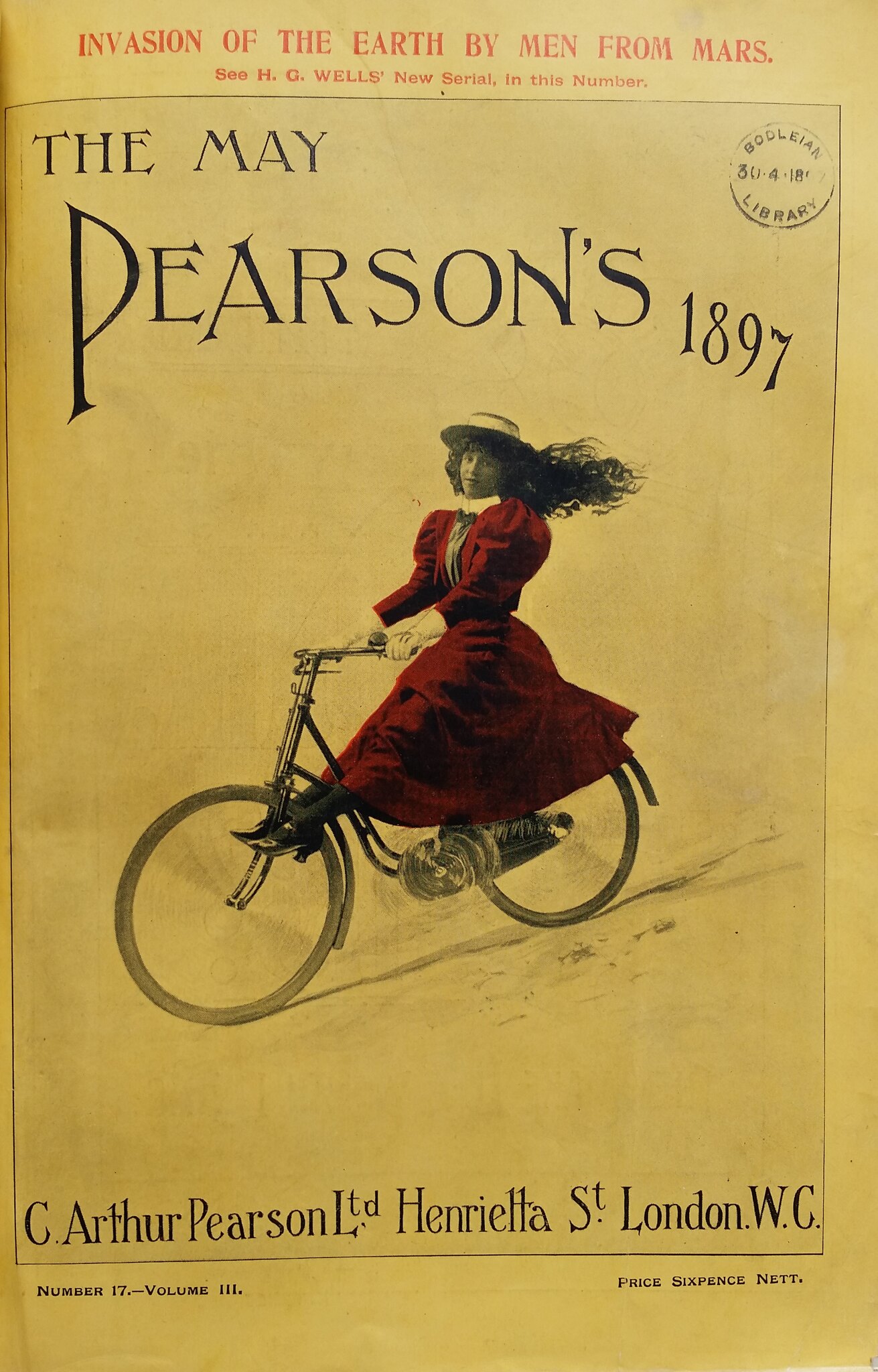
-
Times
From HUGHES AND GEDULD 205: Britain's most prestigious daily newspaper, est. 1788. By the time Wells was writing this novel its politics were mostly Liberal Unionist.
GANGNES: The Dictionary of Nineteenth-Century Journalism lists the Times' date of establishment as 1785 rather than 1788; this discrepancy is due to the fact that it was originally titled the Daily Universal Register before its name change in 1788. In its early days it contained parliamentary reports, foreign news, and advertisements, but soon expanded its contents. Under the editorship of Thomas Barnes in the early 1800s it became a "radical force in the context of the liberalizing reforms of the early part of the [nineteenth] century. It continued to exert a radical influence under subsequent editors (including John Thaddeus Delane). The paper included reports from influential foreign correspondents who covered major European conflicts that were of interest to Britain. When Thomas Cherney became its editor in 1878 and was succeeded in 1884, the paper began to become more conservative and pro-Empire. It has changed ownership but is still published today.
Source:
- Brake, Laurel, and Marysa Demoor, editors. Dictionary of Nineteenth-Century Journalism in Great Britain and Ireland. Academia Press and The British Library, 2009, pp. 627-628.
-
Daily Telegraph
GANGNES: See annotation on Installment 1 regarding the Telegraph.
-
argon
From HUGHES AND GEDULD 205: "a chemically inactive, odorless, colorless, gaseous element, no. 18 on the Periodic Table of the Elements. It had just been discovered and was in the news. Wells had written it up in 'The Newly Discovered Element' and 'The Protean Gas,' Saturday Review 79 (February 9 and May 4, 1895): 183-184, 576-577."
GANGNES: The above articles from the Saturday Review are available in scanned facsimile here ("The Newly Discovered Element") and here ("The Protean Gas").
-
-
decollected.net decollected.net
-
Daily News
GANGNES: Daily News here is changed to Daily Chronicle in the 1898 volume and subsequent editions. The discrepancy between Daily News in the serialized version and Daily Chronicle in the volume could be due to an error on Wells's part that was corrected for the 1898 edition.
The Daily News (1846-1912) was first advertised as a "Morning Newspaper of Liberal Politics and thorough Independence," set up as a rival to the Morning Chronicle. It was edited by Charles Dickens at its launch. The paper "advocated reform in social, political, and economic legislation, fought for a Free Press in supporting the repeal of the Stamp Act, campaigned for impartial dealings with the natives of India and supported Irish Home Rule." It was known for its detailed war reporting, which boosted its circulation.
The Daily Chronicle was a later name (beginning in 1877) of the Clerkenwell News (1855-1930). The paper was "liberal and radical," with a daily column entitled "The Labour Movement" featured in the 1890s. Interestingly, the paper eventually merged with the Daily News (becoming the News Chronicle), but not until 1930--after even the 1925 edition of The War of the Worlds, let alone the 1898 edition.
Source:
- Brake, Laurel, and Marysa Demoor, editors. Dictionary of Nineteenth-Century Journalism in Great Britain and Ireland. Academia Press and The British Library, 2009, p. 128 and 158.
-
Installment 1 of 9 (April 1897)
This installment comprises the text that is roughly comparable to Book I ("The Coming of the Martians"), Chapters I-IV of the 1898 collected edition and subsequent versions.
This is the cover of the April 1897 issue of Pearson's Magazine:

-
Daily Telegraph
From HUGHES AND GEDULD 200: The Daily Telegraph was established in 1855 and to this day is still one of Britain's foremost national newspapers.
From MCCONNELL 127: The Daily Telegraph (founded 1855) catered to the middle class; it featured "flamboyant, often sensational journalism."
GANGNES: Contrary to MCCONNELL, the Dictionary of Nineteenth-Century Journalism writes that the Daily Telegraph (1855-present; founded as the Daily Telegraph and Courier) originally catered to a "wealthy, educated readership" rather than the middle class. Though it became associated with Toryism in the twentieth century, its politics in the nineteenth century were first aligned with the Whigs, especially in its liberal attitude toward foreign policy. This changed somewhat in the 1870s when it supported Benjamin Disraeli, and the paper became more Orientalist under the editorship of Edwin Arnold. The Telegraph also promoted the arts.
Source:
- Brake, Laurel, and Marysa Demoor, editors. Dictionary of Nineteenth-Century Journalism in Great Britain and Ireland. Academia Press and The British Library, 2009, pp. 158-159.
-
Henderson, the London journalist
GANGNES: There are quite a few real "Henderson"s associated with the nineteenth-century press. However, given the role of "Henderson" in this novel, it seems unlikely that the name was meant to refer to any particular journalist.
Source:
- Brake, Laurel, and Marysa Demoor, editors. Dictionary of Nineteenth-Century Journalism in Great Britain and Ireland. Academia Press and The British Library, 2009.
-
A MESSAGE RECEIVED FROM MARS
GANGNES: This is one of the many instances in which newspapers release information that is incorrect, vague, or unhelpful. Throughout the novel, the narrator criticizes the inaccuracy and mercenary nature of the press.
-